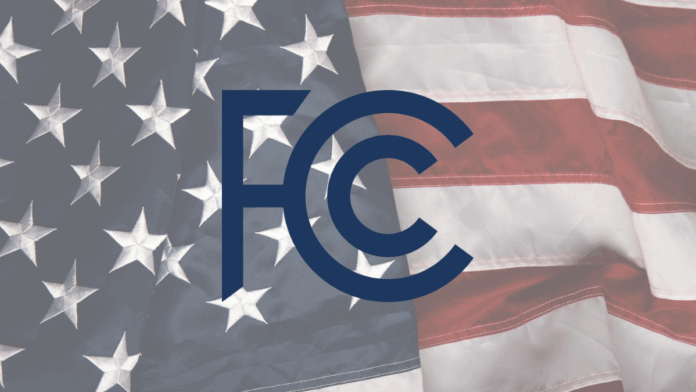In laying out a spectrum pipeline, only 100 megahertz of upper C-Band is specified in the bill. The FCC and NTIA have to find another 700 megahertz, 500 of which has to come from federal holdings.
The “One, Big Beautiful Bill” finally restores the legal authority of the Federal Communications Commission to auction spectrum, and it immediately sets a high bar for how much the FCC should seek to raise through spectrum auctions: At least $85 billion.
The bill orders the Assistant Secretary of Commerce and the FCC to identify at least 800 megahertz of spectrum from within a wide swathe between 1.3 GHz to 10.5 GHz — and the bill mostly leaves it up to the FCC and the Assistant Secretary of Commerce for Communications and Information to determine exactly which bands will be up for sale.
The FCC has to auction at least 300 megahertz of spectrum in the near-term, including at least 100 megahertz of additional C-Band spectrum between 3.98-4.2 GHz. That C-Band spectrum auction has to be conducted within two years. The FCC and NTIA also have to find another 500 megahertz of federal spectrum to reallocate for commercial or shared use that supports “full-power commercial licensed use cases” — a specification which has long been the desire of CTIA and mobile network operators.
“Restoring U.S. leadership in wireless is key to the nation’s economic and national security interests. And the One Big Beautiful Bill succeeds where past efforts failed,” said FCC Chairman Brendan Carr in response to the bill’s passage. “The legislation restores the FCC’s spectrum auction authority after it lapsed in 2023, and it does so by establishing a robust pipeline of spectrum for years to come. This will create jobs, encourage innovation, and expand high-speed connections to more Americans.
“I look forward to implementing this law,” Carr added.
CTIA President and CEO Ajit Pai said: “This legislation represents an historic milestone in wireless innovation. It will encourage next-generation wireless technologies, accelerate wireless deployment for the benefit of all American consumers, and secure our global technology leadership.”
The bill carved out two exceptions for Department of Defense spectrum bands which cannot be considered for auction or reallocation: 3.1-3.45 GHz — a band which U.S. defense systems use and which had been studied for a number of years as a potential candidate for sharing or reallocation — is excluded from consideration for commercial use. So is 7.4-8.4 GHz, which is part of the X-band spectrum and also used by DoD incumbents, including defense satellite systems. (Of note: 7.125-8.4 GHz had been identified by the Biden administration as a candidate band for study where some sub-bands might be able to be reallocated.)
The CBRS spectrum from 3.55-3.7 GHz did not get formal protections in the bill, either from auction or a change in power levels. Neither did the unlicensed spectrum from 5.925-7.125 MHz — which was protected in a previous version of the bill, but not the final version. This has left both Wi-Fi advocates and those operating in the CBRS band uneasy.

“An America-first spectrum strategy must preserve competition from lower-cost wireless providers and support job creation while protecting national security,” said Tamara Smith, spokesperson for Spectrum for the Future, which advocates for shared spectrum approaches. “As the work now shifts to the FCC and NTIA, we urge the Trump administration to ensure that CBRS remains a vital enabling resource for rural families, smart factories, and private investment in 5G networks in all 50 states.”
Wireless broadband advocacy organization WISPA praised some of the tax provisions of the bill, but pointed out that the bill also “potentially puts CBRS and 6 GHz spectrum on the auction block at the FCC.”
WISPA added: “The vast majority of WISPA members employ CBRS and/or 6 GHz services to deliver broadband to their rural and under-resourced communities. As one WISP in Arkansas notes in a recent WISPA survey, ‘If it was not for CBRS, we would not be able to provide service to the majority of our rural customer base.’ Another WISP states its recent 6 GHz deployment was integral to getting 47 MDUs quickly online, delivering fast and affordable broadband to over 500 units in an income-constrained area of Cleveland, OH. WISPs throughout America are doing similar good work with these bands for their communities.”
WISPA said that the tax savings in the bill “will be put to good use by WISPs to bridge the digital divide. But they will be of little accord if the underlying stock of spectrum upon which their operations depend is depleted, disrupted, or outright sold to others at auction. Not only will this undermine the reasonable expectations of the underlying private investment, but it will also strike at the very heart of those businesses that have so successfully worked to eradicate the digital divide.”
The organization said that it would urge the FCC to “find other solutions to meet the legislation’s revenue requirements.”
The OBBB does specify several other bands for analysis, with $50 million in funding for that analysis. Those bands are:
-2.7-2.9 GHz
-7.25-7.4 GHz
-4.4-4.9 GHz
The bill also stipulates that up until 60 days before any auction, the president can “withdraw or modify” any frequency from being auctioned “if the President determines that such modification or withdrawal is necessary to protect the national security of the United States.”

